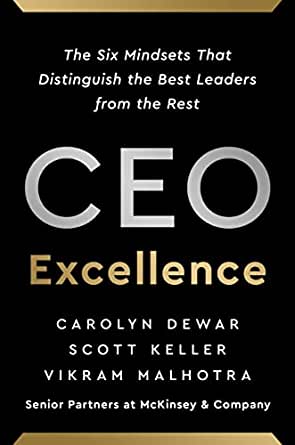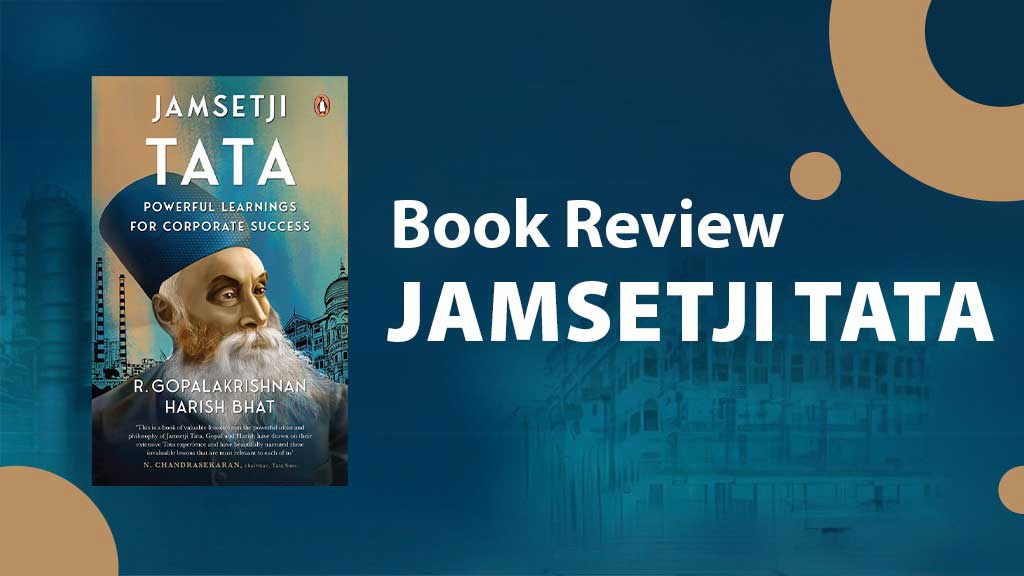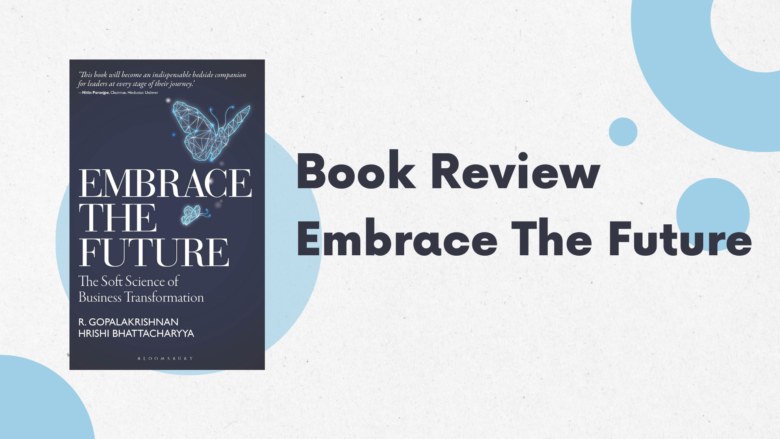Book Review for Business Standard
Book CEO Excellence
Authors Caroline Dewar, Scott Keller, Vikram Malhotra
Reviewer R. Gopalakrishnan, Author and Corporate Advisor
Date 20-5-22
Authored by three experienced McKinsey consultants, this book has rightfully boast of the solid conceptual framework, intellect, and rigor that the firm is fabled for. According to the authors, based on their research interviews with 67 CEOs, there are six mindsets for CEO excellence—Direction Setting, Organizational Alignment, Mobilizing Leaders, Board Engagement, Stakeholder Connection and Personal Effectiveness.
Each mindset is exemplified by three supporting practices. Thus the reader will find eighteen practices that characterize the six mindsets of the excellent CEO. Six mindsets and eighteen practices–that is what the book is all about. They have also included CEO Excellence Assessment and Prioritization tools in the appendix. What more can authors provide? The book writing style is thorough and exhaustive—even exhausting in parts.
However, as always, it will remain a mystery to a manager about how he or she can practically implement those mindsets and practices, and become an excellent CEO. Unless, I reckon, you hire the firm as a consultant! This is a problem, not of this book, but generically of all books that describe how to perfect what are essentially performing arts—golf, music, and dance, for example. Imagine a book based on interviews with Rukmini Arundale, Balasaraswathi, Vyjayantimala, Mrinalini Sarabhai, Alarmel Valli and their ilk on how to be an excellent Bharata Natyam dancer. Even the best and most excellent research, commentaries, and workbooks may not create another dancer like those interviewed.
The theme of this book follows in the genre of several books like the Lessons of Excellence book by Tom Peters and Bob Waterman–both also, coincidentally, McKinsey consultants. Also, the terrific book, Good to Great, by academic, Jim Collins. This reviewer has himself coauthored six books on how good Indian companies have been built into institutions during the last fifty years. However, there are, for sure, two ‘uncommon mindsets’, titled Board Engagement Mindset, and Stakeholder Connection Mindset.
A very important addition in the contemporary context of board effectiveness and governance. Surprisingly, it places the onus of building “a foundation of trust” on the CEO, not the Chairman. The CEO is advised to (i) choose radical transparency (ii) build a strong relationship with the board chair (iii) reach out to individual directors (iv) expose the board to the Chairman. As a former CEO and now serving as an independent director and Chairman, I am nonplussed. Surely there is some role for the board Chairman!
However, the lessons from the interviews of the exemplars are laudable. Consider the quote from Jamie Dimon, who told his JP Morgan Chase board, “Just so you know, I am going to do the right thing for this company. I am going to tell you the whole truth and nothing but the truth to the best of my ability every time…. if I am wrong, I am going to tell you that too.” In a milieu where former CEOs try to stay on as non-executive directors, or worse still, as non-executive chairman, the authors have stated, “In unfortunate situations where a former CEO has become the chair and wants to continue controlling the company, building individual relationships becomes make-or-break.” The book goes on to aver, “Getting on top of board dynamics is one of the real challenges for the CEO early on. There’s informal power and formal power, and in boards, it is the informal power that you really must understand.” Reflect on what happened or could happen in Larsen & Toubro, Tata Sons, Britannia Biscuits, ITC, and several promoter-led companies to appreciate the full import of this advice by the authors.
The Stakeholder Connections Mindset also is a welcome read, especially in the context of changing societal expectations from enterprise. In the section on social purpose practice, the authors refer to a McKinsey Quarterly article on how and where humans find meaning at work. Employees draw on at least five sources of purpose and motivation. The first is themselves—their development and rewards, and freedom to act. The second is fellow employees—feeling a sense of belonging, caring for one another. The third is the company—beating competition, industry leadership, and following best practices. The fourth is customers—impact on them, making their life easier by providing superior products. The last source of purpose and motivation is society—impact on markets and making the world a better place.
When I was making a career switch from Unilever to Tata, I sought advice from my late sister. Since she knew nothing about the corporate sector, she responded that joining Tata must be good “because they are good and benign people.” Occasionally, many people wonder why Tata employees feel a great sense of belonging. I think it is the Tata impact on society.
Finally, as a closing remark, I should add my view that the market would be enriched by a book on how Indian companies, nurtured in the soil of Indian values and culture, become excellent and perform sustainably as institutions of great enterprise. I doubt that the listing and priorities of mindset and practices would be identical to American or European companies.



